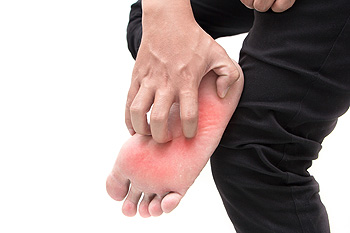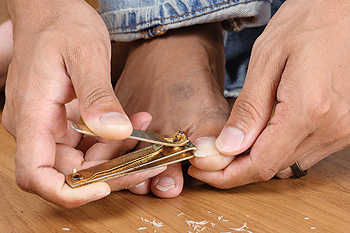 Patients who have had a stress fracture in the foot are often aware of the pain and discomfort it can typically cause. It can occur as a result of overuse from participating in sporting activities, or from standing for the majority of the day. Many people feel the pain after an activity is completed, and it may be difficult to walk. Additional reasons why this type of injury may occur can include changing footwear, increasing the intensity of training, or from running on different surfaces than what one is accustomed to. Relief may be felt when the affected foot is elevated, and the activity that caused the fracture is ceased. Stress fractures may be prevented when the feet are properly warmed up and stretched. If you feel you have endured a stress fracture, it is strongly advised that you schedule a consultation with a podiatrist who can properly treat this condition.
Patients who have had a stress fracture in the foot are often aware of the pain and discomfort it can typically cause. It can occur as a result of overuse from participating in sporting activities, or from standing for the majority of the day. Many people feel the pain after an activity is completed, and it may be difficult to walk. Additional reasons why this type of injury may occur can include changing footwear, increasing the intensity of training, or from running on different surfaces than what one is accustomed to. Relief may be felt when the affected foot is elevated, and the activity that caused the fracture is ceased. Stress fractures may be prevented when the feet are properly warmed up and stretched. If you feel you have endured a stress fracture, it is strongly advised that you schedule a consultation with a podiatrist who can properly treat this condition.
Stress fractures occur when there is a tiny crack within a bone. To learn more, contact one of our podiatrists from Canonsburg Podiatry Associates. Our doctors can provide the care you need to keep you pain free and on your feet.
How Are They Caused?
Stress fractures are the result of repetitive force being placed on the bone. Since the lower leg and feet often carry most of the body’s weight, stress fractures are likely to occur in these areas. If you rush into a new exercise, you are more likely to develop a stress fracture since you are starting too much, too soon. Pain resulting from stress fractures may go unnoticed at first, however it may start to worsen over time.
Risk Factors
- Gender – They are more commonly found in women compared to men.
- Foot Problems – People with unusual arches in their feet are more likely to develop stress fractures.
- Certain Sports – Dancers, gymnasts, tennis players, runners, and basketball players are more likely to develop stress fractures.
- Lack of Nutrients – A lack of vitamin D and calcium may weaken the bones and make you more prone to stress fractures
- Weak Bones – Osteoporosis can weaken the bones therefore resulting in stress fractures
Stress fractures do not always heal properly, so it is important that you seek help from a podiatrist if you suspect you may have one. Ignoring your stress fracture may cause it to worsen, and you may develop chronic pain as well as additional fractures.
If you have any questions, please feel free to contact our office located in Canonsburg and McMurray, PA . We offer the newest diagnostic and treatment technologies for all your foot care needs.









